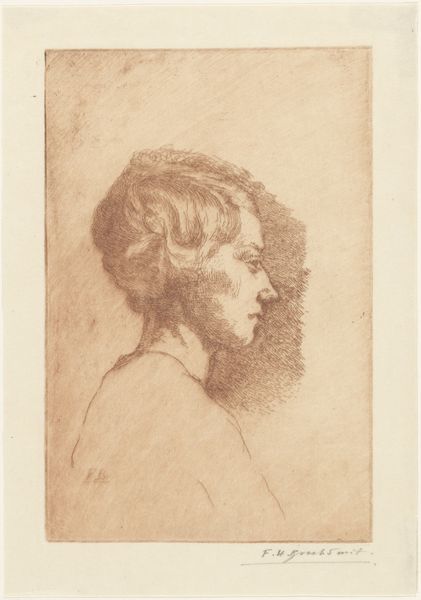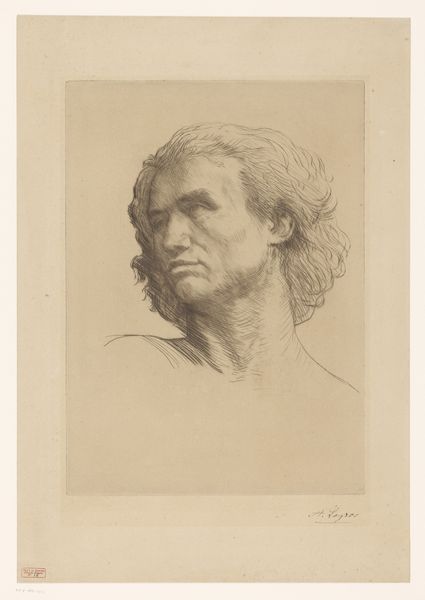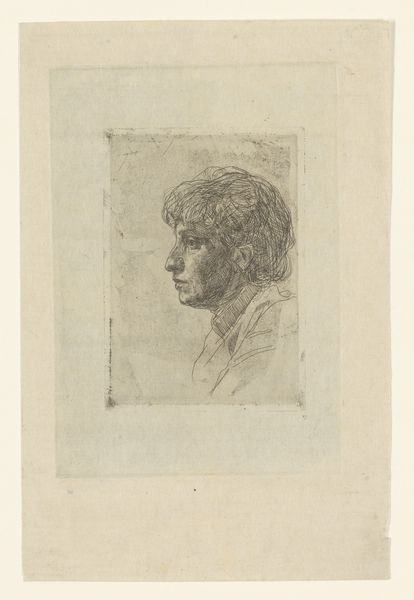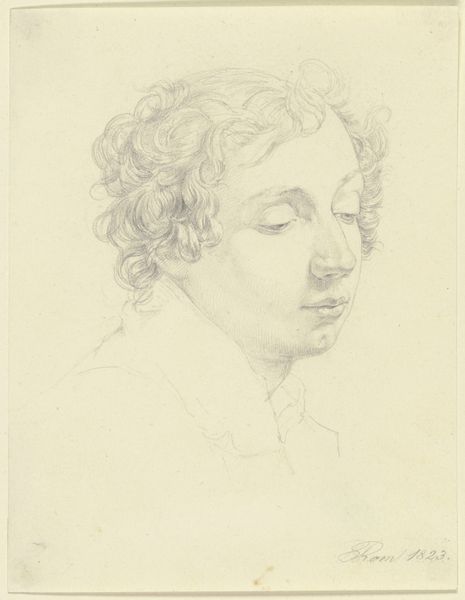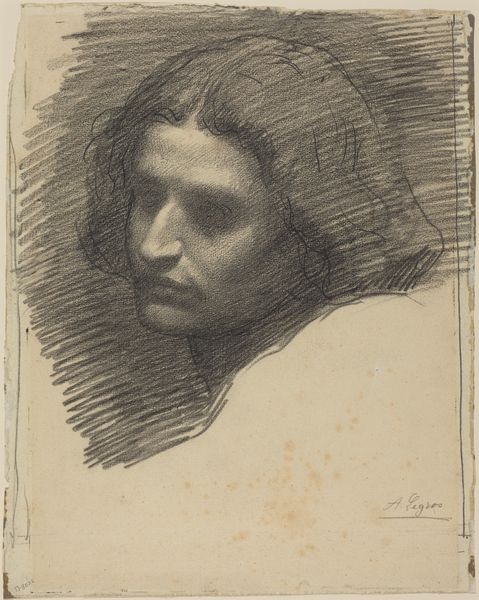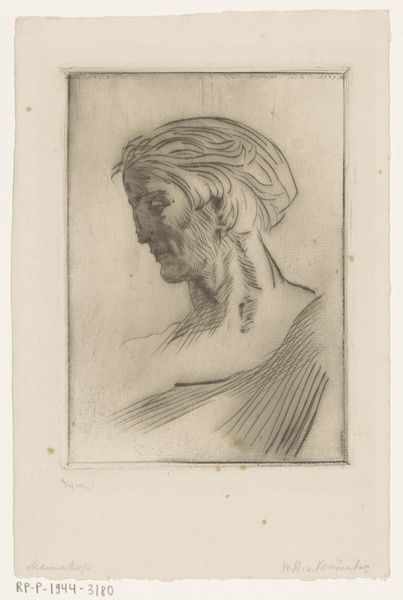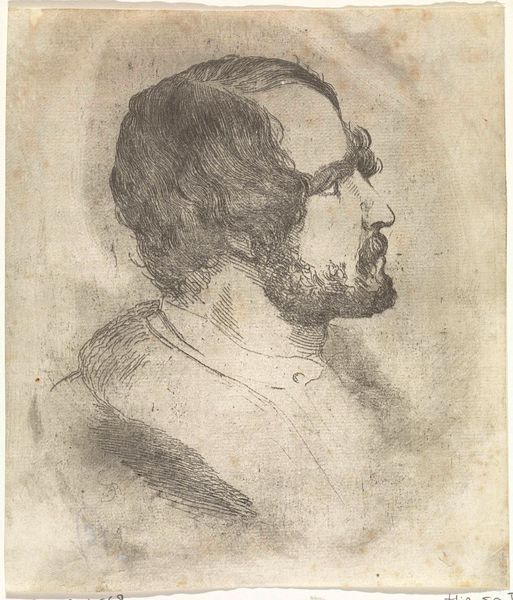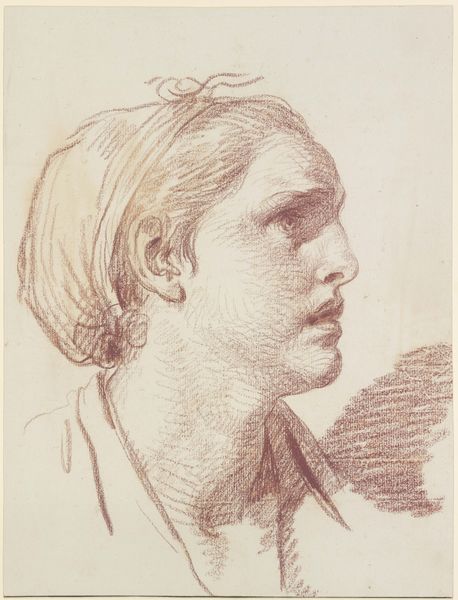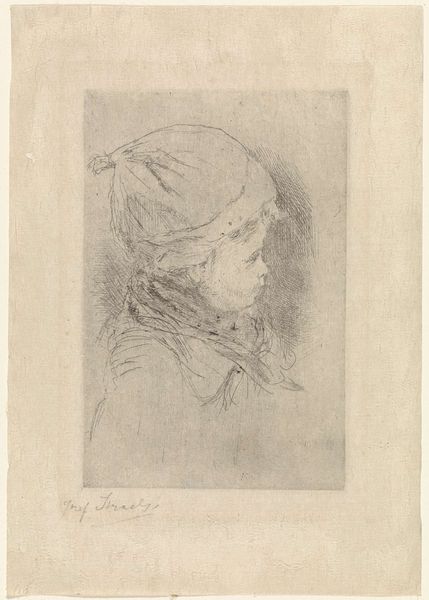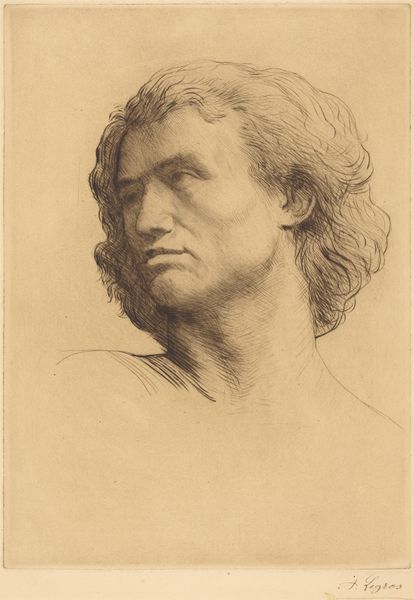
drawing, print, etching, graphite
#
portrait
#
drawing
# print
#
etching
#
pencil drawing
#
graphite
#
portrait drawing
#
realism
Copyright: National Gallery of Art: CC0 1.0
Editor: Here we have Alphonse Legros' "Head of a Man," created in 1877, using graphite and etching. There’s such an elegant simplicity to it. I’m curious about how Legros constructed form with what seems like so few lines. What do you see in this piece? Curator: Indeed. Note how the artist, through the deft manipulation of line and value, has crafted not just a likeness but an evocative study in form. Observe, for example, the strategic deployment of hatching and cross-hatching. Where does Legros apply the densest concentration of line? Editor: It looks like the darkest areas are around the jawline and the side of the nose, really defining those features and creating shadows. Curator: Precisely. And what effect does this localized darkness achieve when juxtaposed with the relatively bare expanse of the paper surrounding the figure? We must recognize the strategic tension here between presence and absence. Editor: It brings the subject forward, highlighting his face. It's a very economical, almost sparse composition, letting the technique speak for itself. The man’s gaze is very contemplative. Is that intentional, do you think? Curator: Contemplation is a fitting description. While intentionality remains a matter of conjecture, it's clear Legros harnesses the very syntax of representation – line, tone, composition – to elicit an introspective mood. His structural means allow Legros to suggest emotion without prescribing it. Editor: I hadn't considered how much the visual choices contribute to that feeling. Now I see how he leads the eye. Curator: Absolutely, every choice creates a new structural relationship, impacting how the work is ultimately viewed and interpreted. A fascinating study, indeed.
Comments
No comments
Be the first to comment and join the conversation on the ultimate creative platform.
